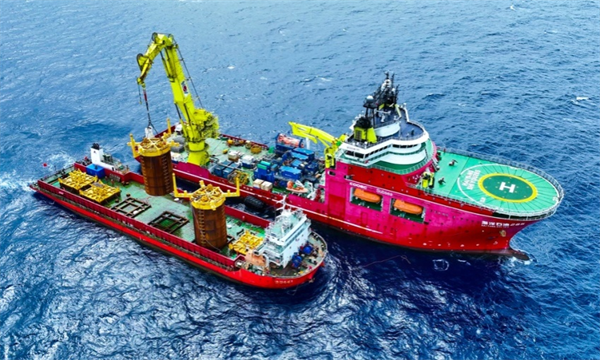
The suction pile installation site [Photo/sasac.gov.cn]
Offshore Oil Engineering Co., Ltd., a subsidiary of China National Offshore Oil Corporation, has recently completed the installation of three 1,000-meter-class deepwater suction piles for the Phase II project of the ultra-deepwater gas field Shenhai-1, or Deep Sea No 1. This achievement marks a new breakthrough in China's installation capabilities for underwater facilities in 1,000-meter-class deepwater oil and gas fields, which is important for the construction of a maritime power and ensuring national energy security.
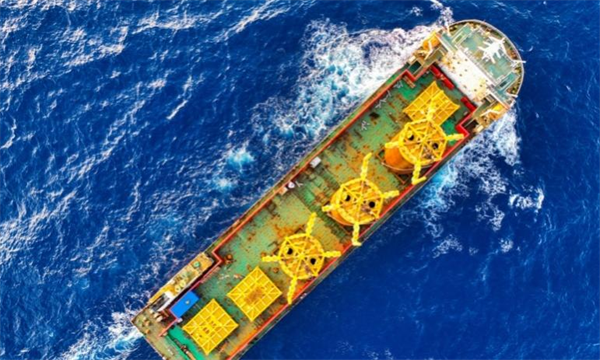
The barge carrying the suction pile reaching the designated sea area [Photo/sasac.gov.cn]
The Phase II project of the Deep Sea No 1 gas field is China's first deepwater high-pressure gas field. Once it is put into operation, the peak annual output of the entire Deep Sea No. 1 gas field will increase from three billion cubic meters to 4.5 billion cubic meters, making it a crucial source of gas to ensure China's energy security.
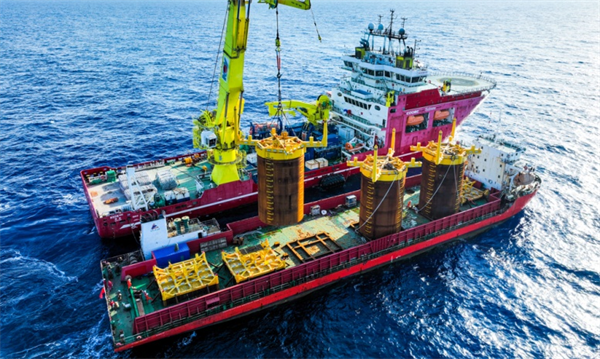
The suction pile installation site [Photo/sasac.gov.cn]
Suction piles are integral foundational structures for large-scale underwater production facilities in deepwater oil and gas fields. They are equivalent to the "foundations" of large underwater manifolds. They consist of pile bodies and top covers, and the upper part of the top covers is equipped with high-precision components such as guiding and docking devices, drainage hatches, and penetration suction pump interfaces. The suction piles for the second phase of the Deep Sea No 1 gas field are 19.68 meters high, with a pile diameter of eight meters and a designed penetration depth of 12.5 meters. They are used to secure the foundations of three central manifolds for underwater production. The installation work at sea is undertaken by Offshore Oil Engineering Co., Ltd.'s 3,000-meter-class deepwater engineering vessel - Ocean Oil 285.
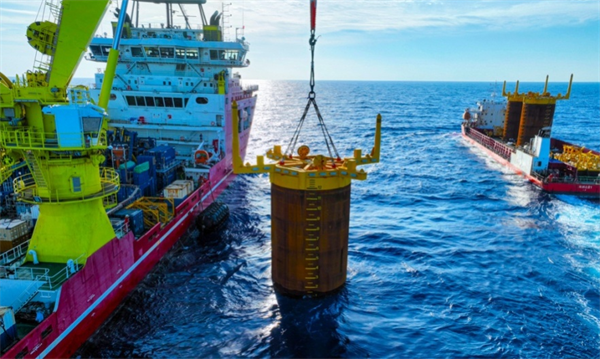
The suction pile installation site [Photo/sasac.gov.cn]
The project team customized three sets of lifting rigs according to the center of gravity of the suction piles, ensuring that the pile bodies are lifted vertically above sea level. They strengthened on-site positioning precision control by deploying six positioning beacons to form a "hexagonal" positioning array calibration framework. Two remotely operated vehicles (ROVs) were used for fine-tuning the heading using the "damping heading adjustment method" to ensure precise heading alignment. During penetration operations, cranes and ROVs worked collaboratively to control hookhead loads and penetration pressures, ensuring the slow and stable descent of the suction piles. Ultimately, the project achieved the successful high-precision penetration of three suction piles in a single attempt.
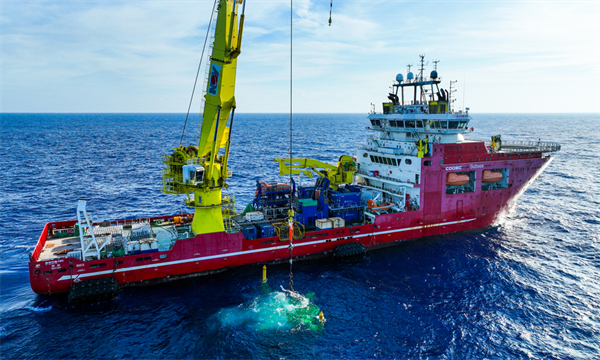
The suction pile installation site [Photo/sasac.gov.cn]
At present, the project team of the Deep Sea No 1 Phase II project is conducting tests on three underwater central manifolds at the Tianjin harbor site, and delivery is expected to be completed in the near future. In the next phase, the project will carry out the docking and installation of the manifolds and suction piles, laying the foundation for the scheduled start-up of the second phase project of the Deep Sea No 1 gas field.
(Executive editor: Xie Yunxiao)